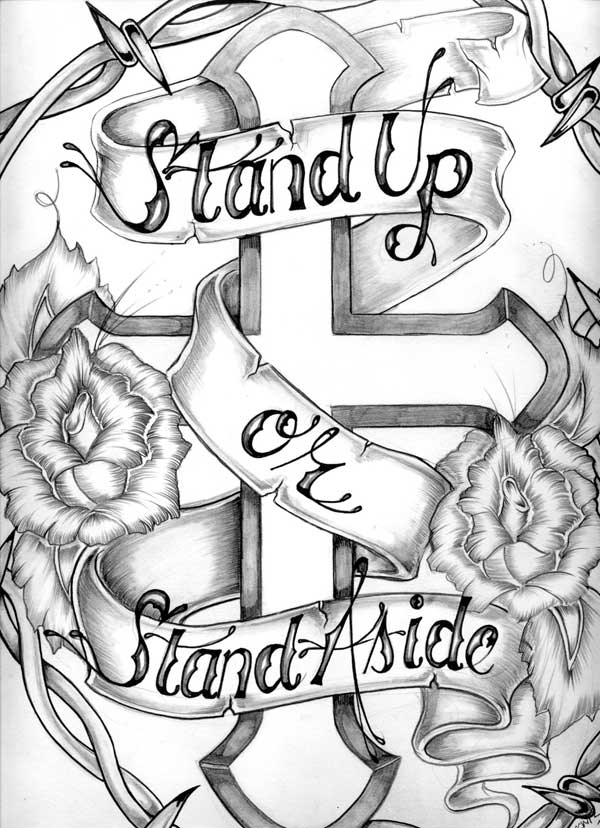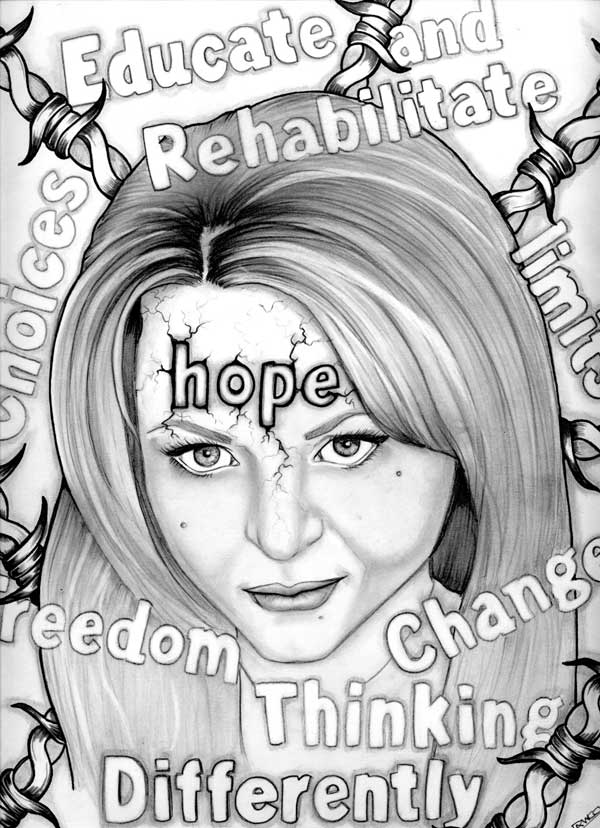
Too dangerous to be in Population, but they're fine for the street
That's a line from Andrew Vachss' The Weight (2010), and we were reminded of it when we received Dallas Akers' essay. Ms. Akers—who is incarcerated at the Washington Corrections Center for Women—submitted her essay into a Prison Writing Contest and won. "That gave me a definite feeling of pride," she told us. "The $250 that came with it ... well, that gave me a different feeling of accomplishment altogether."
by Donna "Dallas" Akers
Originally published on The Zero, January 23, 2013
 |
I was released from the Washington Corrections Center for Women in August of 2007. The Penitentiary released me from the Segregation Unit, where I was housed, straight to the street where I did not have a home.
The Intensive Management Unit (IMU) is the longterm Solitary Confinement Unit. I had been placed in this unit due to the fact that I was a repeat and violent inmate. "Repeat and violent": not just in the street but in the Penitentiary as well.
My behavior dictated that it was not safe for me to walk the Yard with other convicts. However, by releasing me to the community, straight from solitary confinement, the Department of Corrections determined that I was safe to interact with citizens. I reoffended and was back Inside in less than four months.
Was it the Department of Corrections' fault that I committed a new crime which led to my re-incarceration? Absolutely not. My decisions and my choices are what have always governed my life.
Did the Department of Corrections, in any way, prepare me for my release back into society or even prepare society for the release of me? Absolutely not. The irony which was eloquently pointed out to me in a letter that I recently received—that it was not safe to house me with other inmates but that it was deemed safe that I could walk among citizens—was not lost on me either.
The question then becomes: "Was the time I spent in long-term Segregation in any way productive in my rehabilitation?" Did that time in any way deter me from being a violent inmate or any less of a disciplinary problem, or did it just add tinder to an already burning blaze of anger and emotional instability?
I believe the simple fact that I reoffended so quickly answers that question in its entirety.
While I was incarcerated, I had assaulted another inmate. The reason for me resorting to physical violence was not the issue. The only issue was that I had. It was not the first time that I had resolved my issues in this way.
The punishment for this behavior was a fair one, as I knew the ramifications of my actions and I was fully prepared to pay the toll. I was sentenced to one year in Solitary Confinement ... Seg ... IMU ... The Hole. No matter what you call it, it is the same place. Alone. One year where I had no contact with other inmates and very limited contact with staff. A 5'x8' concrete cell became my world and the world inside of me became became my only reality.
There were no outlets for me to deal with any of my thoughts or my emotions. There were no mental health classes or groups. I was simply left alone to stagnate in the self-loathing mire of the emotions that consumed me. Any and all antisocial behaviors and tendencies only managed to make themselves magnified and multiplied inside of that environment and inside of me.
I was there, and then, in the next moment, I was not. One moment I was safely confined inside of my little world, and then the day came in which the Department of Corrections had to spit me out upon the street. Society promptly batted me back in. That was over five years ago.
 |
The first three and a half years that I spent back inside these Walls was a revolving door back into Segregation; once again, I found myself permanently housed there. In an odd way, I found a certain familiarity and comfort in living the life in which I had grown so accustomed. Inside of Solitary, there was a protection—not a physical but emotional protection—from all of that ugliness that surrounded me inside of the prison ... and inside of myself, as well. It became the preferred way for me to do my Time. It was not a punishment because it had become my normal.
Two years ago, through a very proactive Correctional Officer, a Mental Health Provider became involved in my life. Instead of just being able to sit there and stagnate in Segregation, they challenged me to work on myself while I was there. Through a series of self-help books, recommended reading by the author Andrew H. Vachss (which to this day still impacts my life), and counseling, I was prepared to leave Segregation and to assimilate back into the General Population of the Penitentiary. Assimilating myself back into the General Population of the Prison was the first step for me being able to assimilate myself back into society. These truths to me are as self-evident as the next rung on the ladder of change that I am attempting to climb.
Segregation is an intrinsic part of the infrastructure of every Penitentiary. Extended housing in a Segregation Unit is a necessary must for those inmates who cannot live among any society—including an incarcerated one. However, I believe that a line must be boldly drawn between the inmates that the Department of Corrections deems as unfit to live amongst themselves and those inmates who will be released back into society and therefore must find a way to live within that said society. Because if they do not, they will be doomed to reenter and forever remain behind these Walls.
Is Segregation meant to deter bad behavior, or is it meant to simply house unmanageable or problematic inmates until they can be freed from the management of DOC by being released back into society? The answer to that question can only be answered by answering this question: Is the purpose of incarceration to simply punish someone for breaking the laws of society by taking their freedom and leaving them to linger inside of a cage for the amount of time that a court says is sufficient, and then to release that person back into society to flounder on their own? Or is the purpose of a prison sentence to take someone's freedom for the punishment of their crimes? While doing so, to rehabilitate and arm that inmate with every possible tool so that, upon their release, they might have a chance to reenter society with a set of skills (coping, educational, technical...) which might enable them to become a productive member of that society—thereby breaking the ugly and never-ending cycle of recidivism?
With the economical challenges that are facing our country, one of the very first places for budget cuts is in any type of funding for inmate betterment programs within the Penitentiary. It is simply easier, not more cost-effective, for the Department of Corrections to Segregate instead of Educate. Unfortunately, however, with the recidivism rate as it is, Education and Rehabilitation is the only hope that America's prison population has.
I believe that my own personal experience proves the validity of this statement. In my case, the 12 weeks worth of Anger Management classes that I took had a far greater impact than the 12 months that I spent in Segregation. My behavior further validates this statement simply by the fact thatI have not returned to Segregation since completing it.
© 2012 Dallas Akers. All rights reserved.
